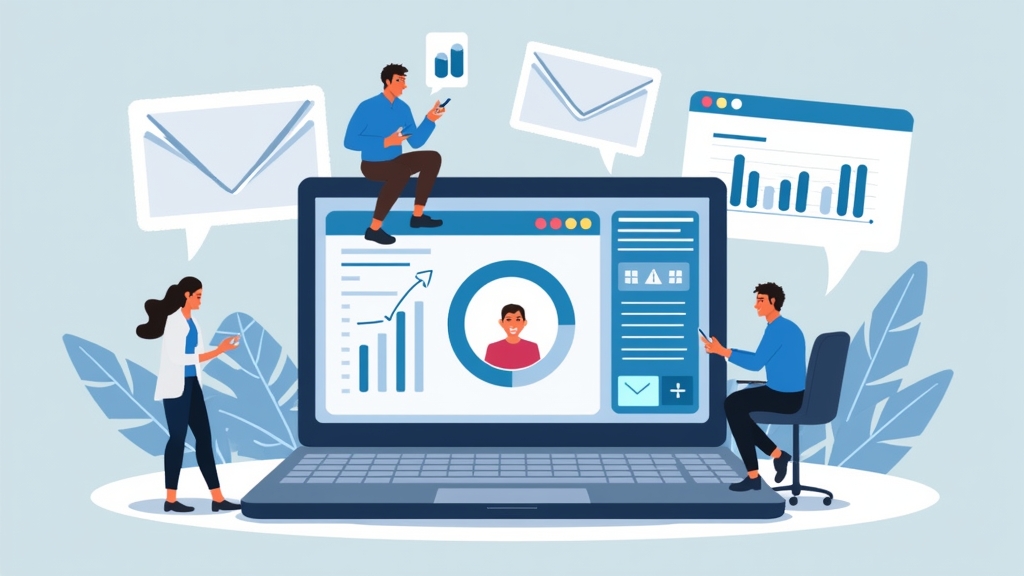Crafting an Effective Webinar Email Sequence for Marketing Success
Introduction
In today’s digital world, webinars are a powerful tool for connecting with your audience and promoting your brand. However, the success of your webinar often hinges on how well you communicate with potential attendees through email. An effective email sequence can significantly boost attendance rates and engagement levels. This article will explore the importance of email sequences in webinar marketing and provide an overview of key components that make these communications successful.
Understanding Your Audience
Identifying Target Demographics
To create a successful email sequence, you must first understand who your audience is. Start by identifying their demographics, such as age, location, profession, and interests. Use surveys or analytics tools to gather this information. Knowing your audience helps tailor your messaging to resonate with them effectively.
Tailoring Content to Audience Needs
Once you know who your audience is, it’s time to customize the content of your emails based on their needs and preferences. Consider what problems they face and how your webinar can help solve those issues. By addressing specific pain points in your emails, you increase the chances that recipients will find value in attending.
Pre-Webinar Email Strategies
Invitation Emails: Creating a Compelling Call to Action
The first step in engaging potential attendees is sending out invitation emails. Make sure these emails have a clear call to action (CTA). Use persuasive language that highlights the benefits of attending the webinar—what knowledge or skills will they gain? A strong CTA encourages readers to register immediately.
Reminder Emails: Timing and Frequency Best Practices
As the date approaches, send reminder emails to keep interest alive. Aim for at least two reminders: one a week before and another one day prior to the event. These reminders should reiterate key details like date, time, and registration link while creating urgency—mention limited spots or exclusive content available only during the live session.
Teaser Content: Building Anticipation Before the Webinar
Teaser content can be an exciting way to build anticipation for your webinar. Share sneak peeks of topics you’ll cover or introduce guest speakers through short bios or video clips in your emails. This strategy not only piques curiosity but also reinforces why attendees should not miss out on this opportunity.
During the Webinar Engagement
Live Email Updates for Attendees
While hosting a live webinar, consider sending real-time email updates to participants if they’ve opted-in for notifications. These updates could include links to resources mentioned during the presentation or reminders about interactive segments coming up next.
Encouraging Interaction Through Live Polls and Questions
Encourage interaction by integrating live polls or Q&A sessions into your webinar structure. Mention these opportunities in advance through pre-webinar emails so attendees know they’ll have a chance to engage actively during the session.
Post-Webinar Follow-Up Techniques
Thank You Emails: Importance of Gratitude in Customer Relations
After concluding your webinar, send out thank-you emails promptly. Express gratitude towards attendees for their participation; this simple gesture fosters goodwill and strengthens relationships with potential customers.
Providing Access to Recording and Resources
Include links within follow-up emails where participants can access recordings of the webinar along with any additional resources shared during it—like slides or handouts—to add value even after it has ended.
Gathering Feedback to Improve Future Webinars
Lastly, ask attendees for feedback regarding their experience via surveys included in follow-up communications. Their insights are invaluable when refining future webinars; understanding what worked well—and what didn’t—will help enhance future offerings.
Analyzing the Success of Your Email Sequence
Metrics to Measure Effectiveness (Open Rates, Click-Through Rates)
To evaluate how effective your email sequence was at driving attendance and engagement during webinars requires analyzing various metrics such as open rates (how many people opened) and click-through rates (how many clicked on links). These numbers provide insight into which parts resonated most with audiences.
Making Data-Driven Adjustments for Future Campaigns
Using data from previous campaigns allows marketers like yourself not just assess performance but also make informed adjustments moving forward based on trends observed over time—this continuous improvement cycle leads toward greater success!
Best Practices for Writing Webinar Emails
Crafting Engaging Subject Lines
Your subject line is crucial—it determines whether recipients will open an email! Create engaging subject lines that spark curiosity while clearly communicating what value lies inside each message sent throughout all stages leading up-to-and-after-the-event itself!
Personalization Techniques to Increase Engagement
Personalization goes beyond using someone’s name; segmenting lists based on interests enables tailored messaging suited specifically towards different groups within larger audiences resulting increased engagement overall!
Conclusion
Creating an effective email sequence is essential for maximizing attendance at webinars while fostering ongoing relationships with participants afterward! Remember key strategies such as understanding target demographics & tailoring content accordingly alongside crafting compelling invitations/reminders/thank-yous—all contribute toward achieving marketing success!
📢 Explore More: Continue Your Journey!
If this article helped you understand how important an effective email sequence is for webinars, check out “Maximizing Engagement Through Interactive Webinars”! It covers innovative techniques that help keep participants engaged throughout any online event more effectively.














![NEEWER 55W 18"/45cm Ring Light Kit [New Version], 5600K Dimmable ...](https://m.media-amazon.com/images/I/414QLqvZWLL._AC_.jpg)








